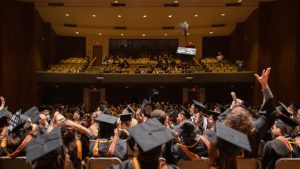The VCU School of the Arts is pleased to hold an in-person commencement celebration in May 2026 honoring both undergraduate and graduate students.
Friday, May 8, 2026
1:30 p.m.
Altria Theater
6 N. Laurel St., Richmond, VA 23220
This celebration will recognize VCUarts students graduating in August 2025, December 2025 and May 2026.
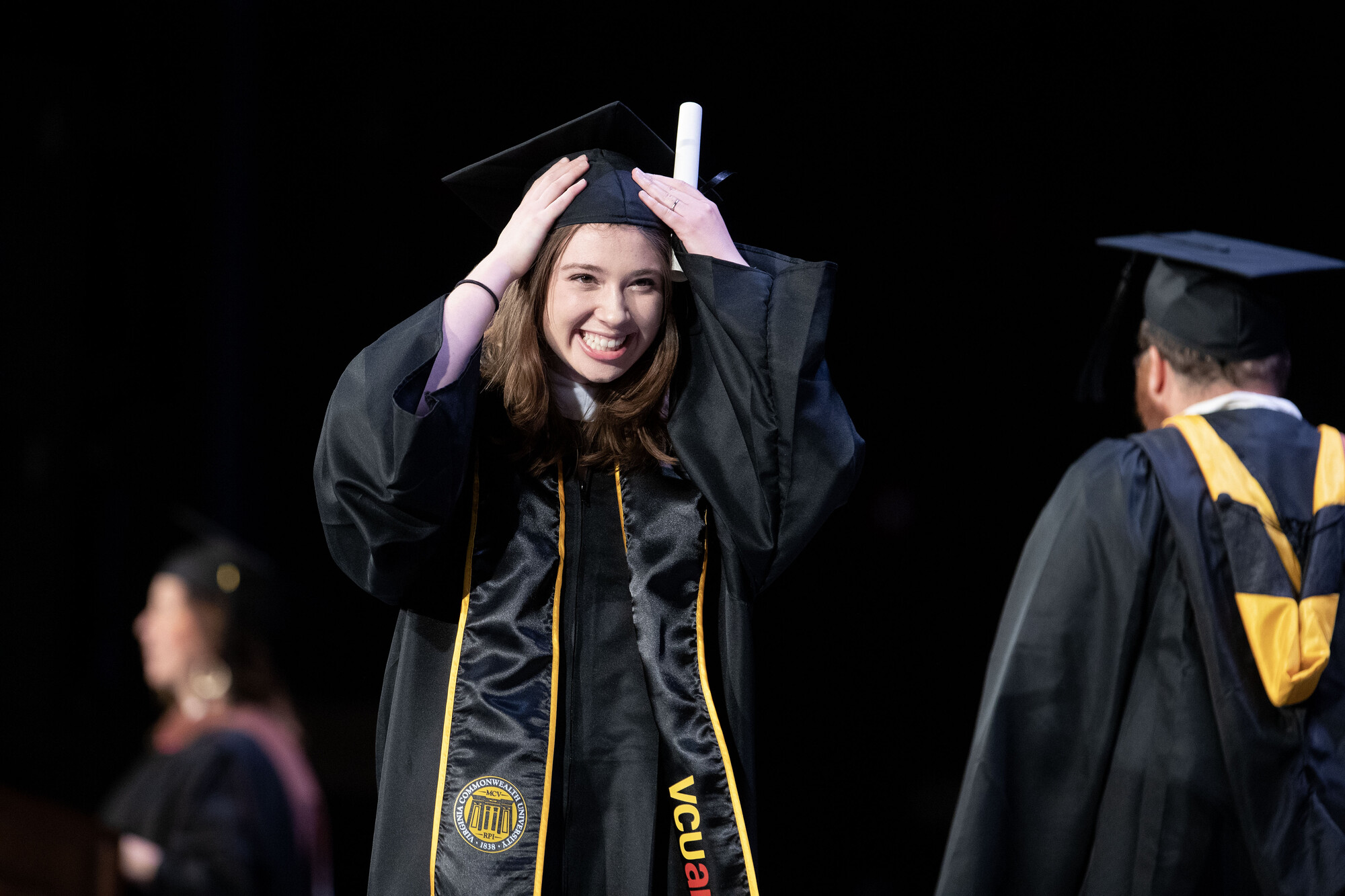

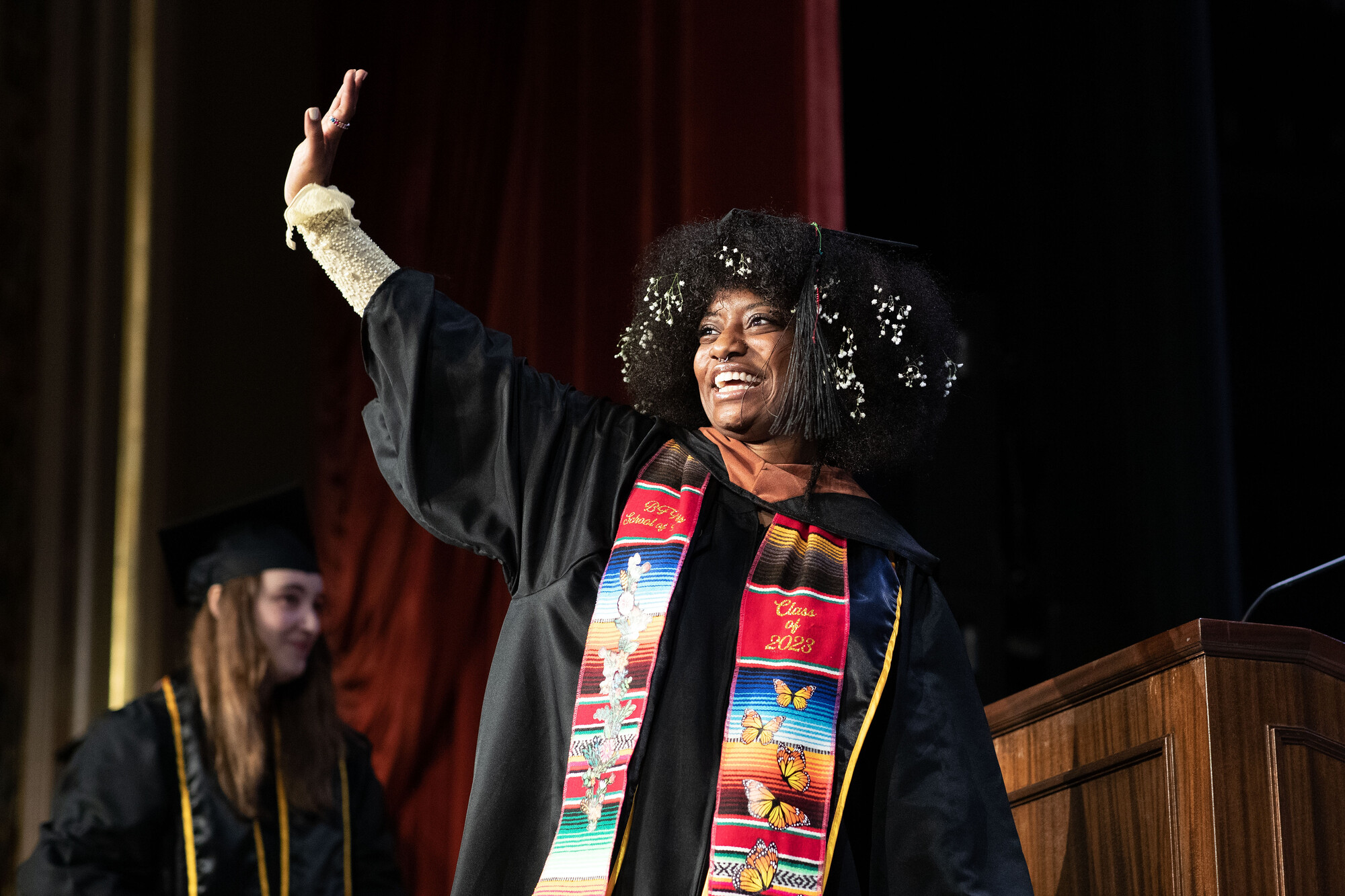
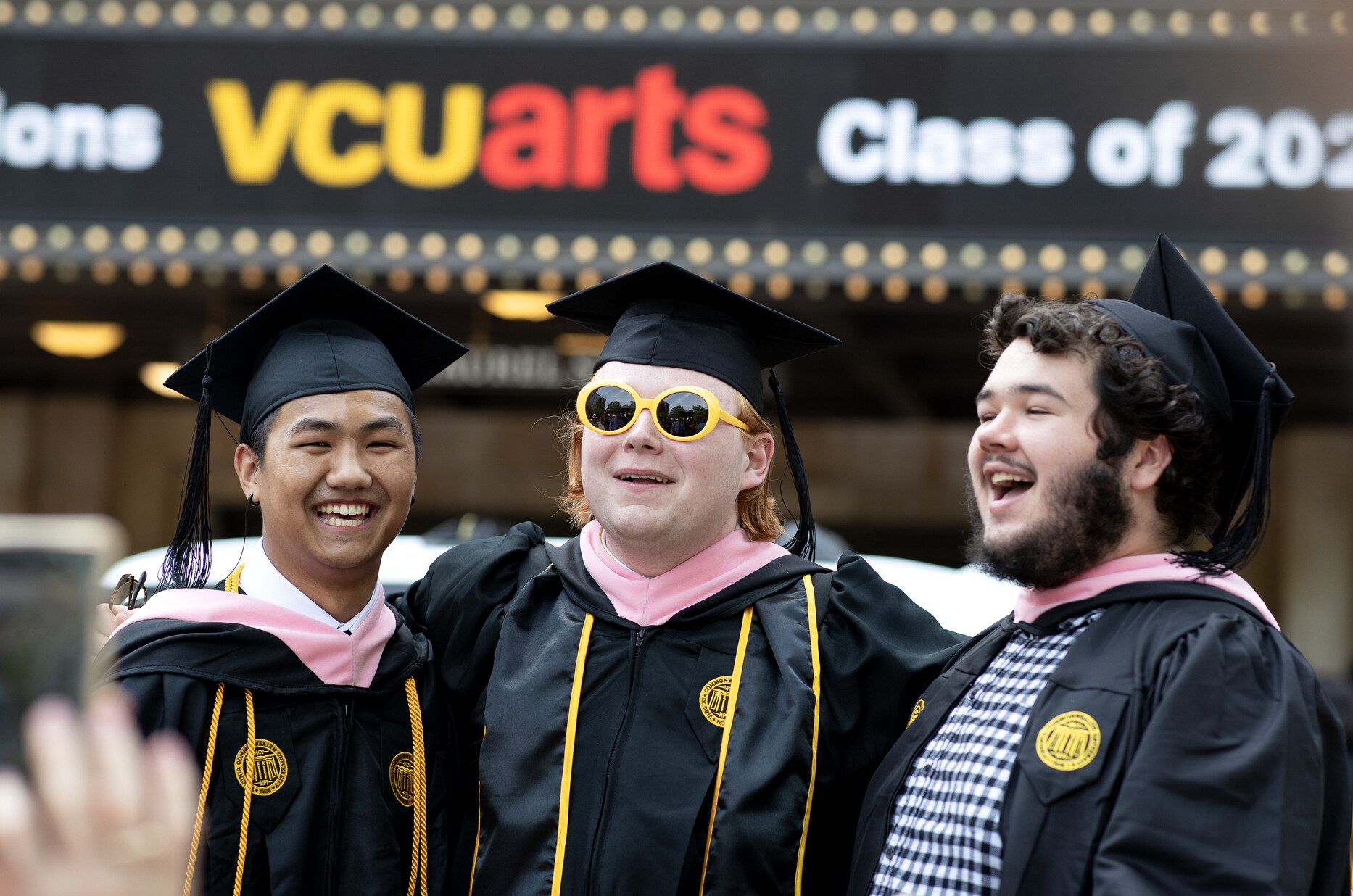
Tickets
Graduates may bring up to four guests to the in-person celebration, which will also be livestreamed. Ticket distribution information will be announced in spring 2026.
Questions
For more information about the VCUarts commencement celebration, please see the commencement FAQ. If you have additional questions, please contact the Dean’s Office at arts@vcu.edu or 804-VCU-ARTS.
Photography
A professional photographer will photograph graduates after they have crossed the stage. A proof of this photo and information about purchasing will be sent to the email address provided on the reader form that graduates fill out upon arrival.
Livestream
The celebration will be livestreamed for guests who are not able to attend in person.
Regalia

- Gordy Haab (B.M. ’00) – May 2025
- Aaron Anderson, Ph.D. – Dec. 2024
- Amber Esseiva (B.A. ’12) – Dec. 2024
- Joshua Boone (B.F.A. ’10) – May 2024
- Charles Watlington (B.F.A. ’02) – Dec. 2023
- Jordan Bruner (B.F.A. ’06) – May 2023
- Janelle Washington (B.F.A. ’99) – Dec. 2022
- Valerie Cassel Oliver – May 2022
- P. Muzi Branch (B.F.A. ’80, M.A.E. ’86) – Dec. 2021
- Samantha Speis (B.F.A. ’05) – May 2021
- Sophia Li (B.A. ’13) – Dec. 2019
- Elizabeth Turk – May 2019
- Jason Butler Harner (B.F.A. ’92) – Dec. 2018
- Bobby C. Martin Jr. (B.F.A. ’99) – May 2018
- Ashley Hawkins (B.F.A. ’07) – Dec. 2017
- Michael Hearst (B.M. ’95) – May 2017
- Noah Scalin – Dec. 2016
- Jarvis Jefferson (B.F.A. ’82) – May 2016
- John Paolini (M.F.A. ’93) – Dec. 2015
- Anne Holton – May 2015
- Eric Booth – Dec. 2014
- Andy Stefanovich – May 2014
- Stephen Nachmanovitch – Dec. 2013
- Teresita Fernández (M.F.A. ’92) – May 2013
- Elizabeth King – Dec. 2012
Resources for Recent Grads
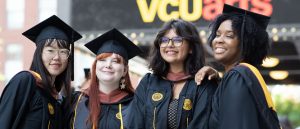
Commencement FAQ
The 2026 celebration will be held Friday, May 8, 2026 at 1:30 p.m.
The VCUarts commencement celebration will be held at Richmond’s Altria Theater (6 N. Laurel St.).
Graduates should plan to arrive 30 minutes prior to the event start time for line-up in the lower level of the Altria Theater.
Upon arrival, you will complete a form to have your name called during the ceremony.
Yes. All graduates who attend the VCUarts commencement will have their names called when they walk across the stage.
All August 2025, December 2025 and May 2026 graduates that checked out on eServices by the deadline stated in the academic calendar will be printed in the program. Please contact your departmental advisor for questions about the graduation checkout process.
Graduates may reserve up to four tickets for guests to attend the in-person celebration at the Altria Theater. Ticket distribution information will be announced in spring 2026.
We will also offer a livestream of the celebration for guests who are not able to attend in person.
No—you may attend one, both or neither.
It depends on your degree and major. This chart outlines the hood and tassel colors that will be present during our commencement.
| Degree | Major | Hood Color | Tassel Color |
| Bachelor of Arts | Art History | White | Black |
| Fashion | Brown | Black | |
| Film | White | Black | |
| Music | Pink | Black | |
| Theatre | Brown | Black | |
| Bachelor of Fine Arts | Art Education | Brown | Black |
| Communication Arts | Brown | Black | |
| Craft and Material Studies | Brown | Black | |
| Dance and Choreography | Brown | Black | |
| Fashion | Brown | Black | |
| Graphic Design | Brown | Black | |
| Interior Design | Brown | Black | |
| Kinetic Imaging | Brown | Black | |
| Painting and Printmaking | Brown | Black | |
| Photography and Film | Brown | Black | |
| Sculpture | Brown | Black | |
| Theatre | Brown | Black | |
| Bachelor of Music | Music | Pink | Black |
| Master of Art | Art History | White | Black |
| Master of Art Education | Art Education | Brown | Black |
| Master of Fine Arts | Design | Brown | Black |
| Fine Arts | Brown | Black | |
| Theatre | Brown | Black | |
| Master of Music | Music | Pink | Black |
| Ph.D. | Ph.D. | Royal | Old Gold |
A cap and gown are required for graduates. A professional photographer will take photos as you cross the stage. Proofs will be shared with the graduate by way of the email they provided on the registration form.
If you are unable to attend the Grad Fair or visit the bookstore, please order your regalia online at balfour.com/vcu. Shipping charges will apply to all internet orders.
Learn more about the university’s commencement on their website.
Yes. With questions or requests regarding accessibility, please contact arts@vcu.edu or 804-VCU-
Complimentary parking for graduates and their guests is available at the VCU West Main Street Parking Deck (801 W. Main St.).
No; however this distinction will be indicated on your diploma and on your transcript.
No. Diplomas will be mailed to the address provided during graduation checkout. To receive your diploma, you must meet all financial obligations to the university. Please contact the Office of Records and Registration at 804-827-1673 or graduation@vcu.edu with any questions.
The School of the Arts takes great pride in recognizing its graduates. If you have any questions or need more information, please contact the Dean’s Office at arts@vcu.edu or 804-VCU-
